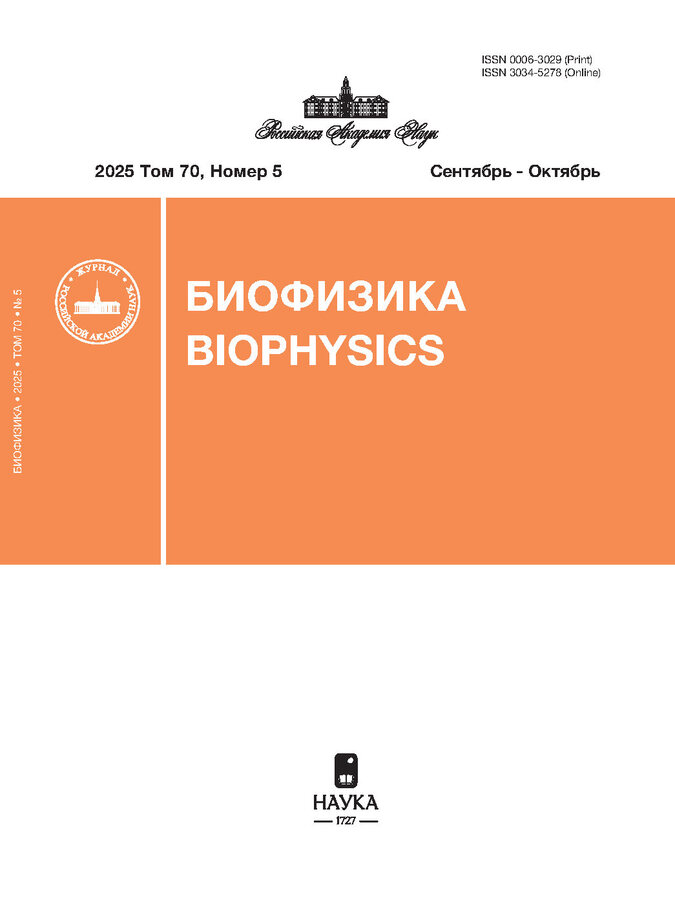ПРОТИВОВИРУСНОЕ ДЕЙСТВИЕ В ОТНОШЕНИИ SARS-CoV-2 РАСТВОРОВ ДИНИТРОЗИЛЬНЫХ КОМПЛЕКСОВ ЖЕЛЕЗА ПРИ ИНГАЛЯЦИИ СИРИЙСКИМ ХОМЯЧКАМ В «NOSE-ONLY»-КАМЕРЕ
- Авторы: Шиповалов А.В1, Ванин А.Ф2, Ткачев Н.А2, Пьянков О.В1, Асанбаева Н.Б3, Аньков С.В3, Багрянская Е.Г3, Бакланов А.М4, Валиулин С.В4, Стекленева М.Е4
-
Учреждения:
- Государственный научный центр вирусологии и биотехнологии «Вектор» Роспотребнадзора РФ
- Федеральный исследовательский центр химической физики им. Н.Н. Семёнова РАН
- Новосибирский институт органической химии им. Н.Н. Ворожцова СО РАН
- Институт химической кинетики и горения СО РАН
- Выпуск: Том 69, № 6 (2024)
- Страницы: 1318-1328
- Раздел: Биофизика cложныx cиcтем
- URL: https://gynecology.orscience.ru/0006-3029/article/view/676159
- DOI: https://doi.org/10.31857/S0006302924060176
- EDN: https://elibrary.ru/NKJCHT
- ID: 676159
Цитировать
Полный текст
Аннотация
Об авторах
А. В Шиповалов
Государственный научный центр вирусологии и биотехнологии «Вектор» Роспотребнадзора РФНовосибирск, Россия
А. Ф Ванин
Федеральный исследовательский центр химической физики им. Н.Н. Семёнова РАН
Email: vanin@polymer.chph.ras.ru
Москва, Россия
Н. А Ткачев
Федеральный исследовательский центр химической физики им. Н.Н. Семёнова РАНМосква, Россия
О. В Пьянков
Государственный научный центр вирусологии и биотехнологии «Вектор» Роспотребнадзора РФНовосибирск, Россия
Н. Б Асанбаева
Новосибирский институт органической химии им. Н.Н. Ворожцова СО РАННовосибирск, Россия
С. В Аньков
Новосибирский институт органической химии им. Н.Н. Ворожцова СО РАННовосибирск, Россия
Е. Г Багрянская
Новосибирский институт органической химии им. Н.Н. Ворожцова СО РАННовосибирск, Россия
А. М Бакланов
Институт химической кинетики и горения СО РАННовосибирск, Россия
С. В Валиулин
Институт химической кинетики и горения СО РАННовосибирск, Россия
М. Е Стекленева
Институт химической кинетики и горения СО РАННовосибирск, Россия
Список литературы
- Шиповалов А. В., Ванин А. Ф., Пьянков О. В., Багрянская Е. Г., Микоян В. Д., Ткачев Н. А., Асанбаева Н. А. и Попкова В. Я. Противовирусная активность катионов нитрозония в отношении SARS-CoV-2 на модели сирийского хомячка. Биофизика, 67, 969-981 (2022). doi: 10.31857/S0006302922050167
- Ванин А. Ф. Динитрозильные комплексы железа с тиол-содержащими лигандами как доноры катиона нитрозония могут подавлять вирусные инфекции (гипотеза). Биофизика, 65, 818-823 (2020). doi: 10.31857/S0006302920040250
- Onischuk A. A., Tolstikova T. G., Sorokina I. V., Zhukova N. A., Baklanov A. M., Karasev V. V., Borovkova O. V., Dultseva G. G., Boldyrev V. V., and Fomin V. M. Analgesic effect from Ibuprofen nanoparticles inhaled by male mice. J. Aerosol Med. Pulm. Drug Deliv., 22 (3), 245254 (2009). doi: 10.1089/jamp.2008.0721
- Borodulin R. R., Kubrina L. N., Shvydkiy V. O., Lakomkin V. L., and Vanin A. F. A simple protocol for the synthesis of dinitrosyl iron complexes with glutathione: EPR, optical, chromatographic and biological characterization of reaction products. Nitric Oxide, 35, 110-115 (2013). doi: 10.1016/j.niox.2013.08.007
- Vanin A. F., Poltorakov A. P., Mikoyan V. D., Kubrina L. N., and Burbaev D. S. Polynuclear water-soluble dinitrosyl iron complexes with cysteine or glutathione ligands: electron paramagnetic resonance and optical studies. Nitric Oxide, 23, 136-149 (2010). doi: 10.1016/j.niox.2010.05.285
- Vanin A. F., Serezhenkov V. A., Mikoyan V. D., and Genkin M. V. The 2.03 signal as an indicator of dinitrosyl-iron complexes with thiol-containing ligands. Nitric Oxide, 2, 224-234 (1998). doi: 10.1006/niox.1998.0180
- Vanin A. F., Huisman A., Stroes E. S., de Ruijter-Heijstek F. C., Rabelink T. J., and van Faassen E. E. Antioxidant capacity of mononitrosyl-iron-dithiocarbamate complexes: implications for NO trapping. Free Radic. Biol. Med., 30, 813-824 (2001). doi: 10.1016/s0891-5849(01)00466-x
- Ванин A. Ф., Микоян В. Д, Кубрина Л. Н., Бородулин P. P. и Бургова Е. Н. Моно- и биядерные динитрозильные комплексы железа с тиол-содержпащими лигандами в различных биосистемах. Биофизика, 60, 735-747 (2015).
- Mikoyan V. D., Burgova E. N., Borodulin R. R., and Vanin A. F. The binuclear form of dinitrosyl iron complexes with thiol-containing ligands in animal tissues. Nitric Oxide, 62, 1-10 (2017). doi: 10.1016/j.niox.2016.10.007
- Ванин А. Ф. и Ткачев Н. А. Динитрозильные комплексы железа с тиол-содержащими лигандами как источник универсальных цитотоксинов - катионов нитрозония. Биофизика, 68, 421-434 (2023). doi: 10.31857/S0006302923030018
- Ванин А. Ф., Абрамов А. А., Вагапов А. Б., Тимошин А. А., Пекшев А. В., Лакомкин В. Л. и Рууге Э. К. Почему вдыхание газообразного оксида азота не влияет на системное артериальное давление у человека и животных, Биофизика, 68, 1259-1264 (2023). doi: 10.31857/S0006302923060170
- Shumaev K. B., Gubkin A. A., Serezhenkov V. A., Lobysheva I. I., Kosmachevskaya O. V., Ruuge E. K., Lankin V. Z., Topunov A. F., and Vanin A. F. Interaction of reactive oxygen and nitrogen species with albumin- and methemoglobin-bound dinitrosyl-iron complexes. Nitric Oxide, 18, 37-46 (2008). doi: 10.1016/j.niox.2007.09.085
Дополнительные файлы








